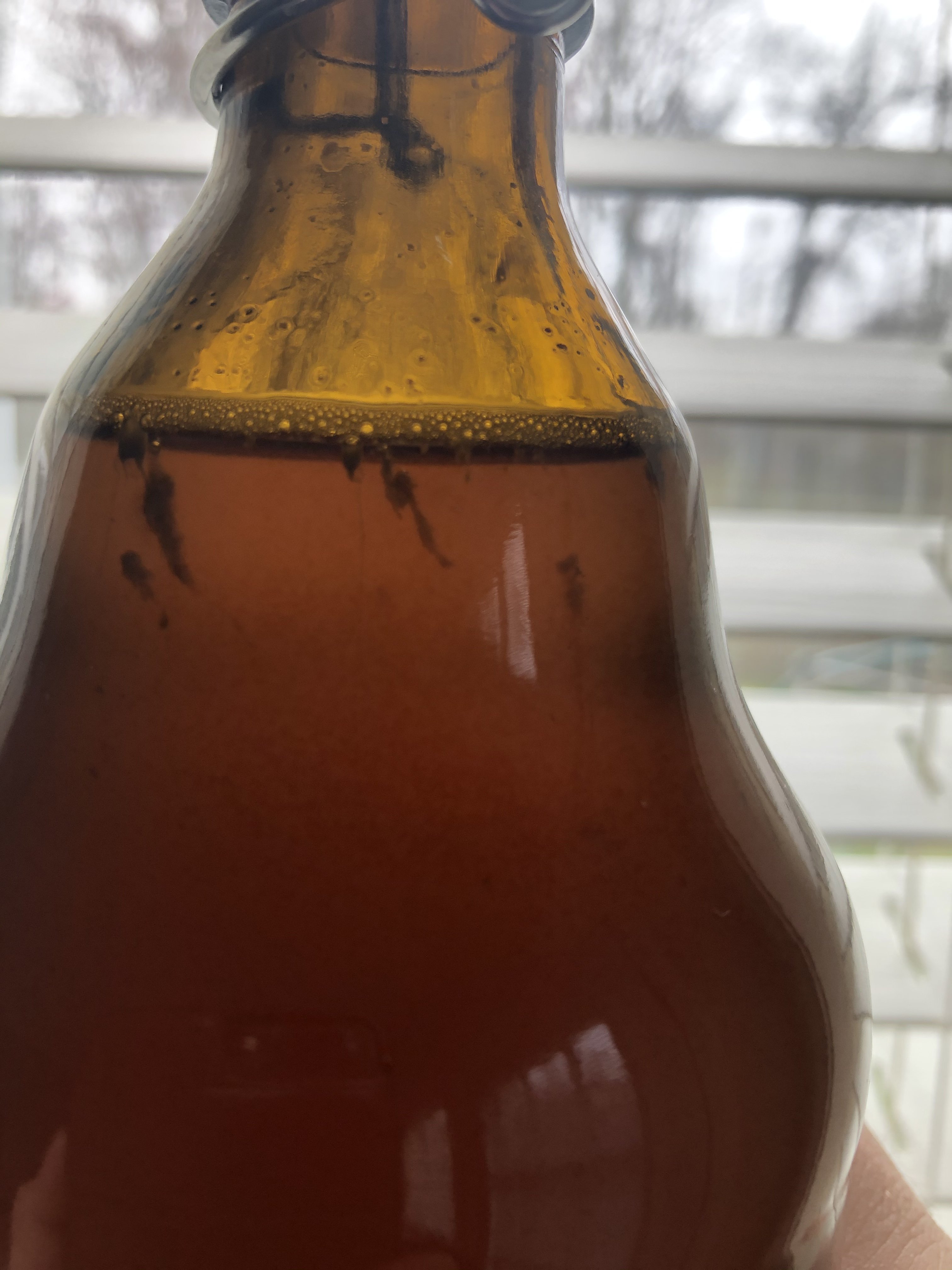Any input welcome. This is my third batch (Tripel). No problems with the first two. But this is the first time I used some swing top bottles for part of the batch, and one of them has some very nasty looking stringy floaters traveling up and down (riding a bubble up, then dropping back down). None if the plastic bottles appear to have these. The below 1-liter swingtop has a lot of them. -and one smaller swingtop may have some small black specks as well.
They are supposed to bottle condition another 6 weeks. So, I am just going to wait to see what happens/changes. But is this already diagnosable as an infection? If so, hopefully it will be just the one or two bottle. I was really looking forward to this beer.
Thanks.


They are supposed to bottle condition another 6 weeks. So, I am just going to wait to see what happens/changes. But is this already diagnosable as an infection? If so, hopefully it will be just the one or two bottle. I was really looking forward to this beer.
Thanks.





